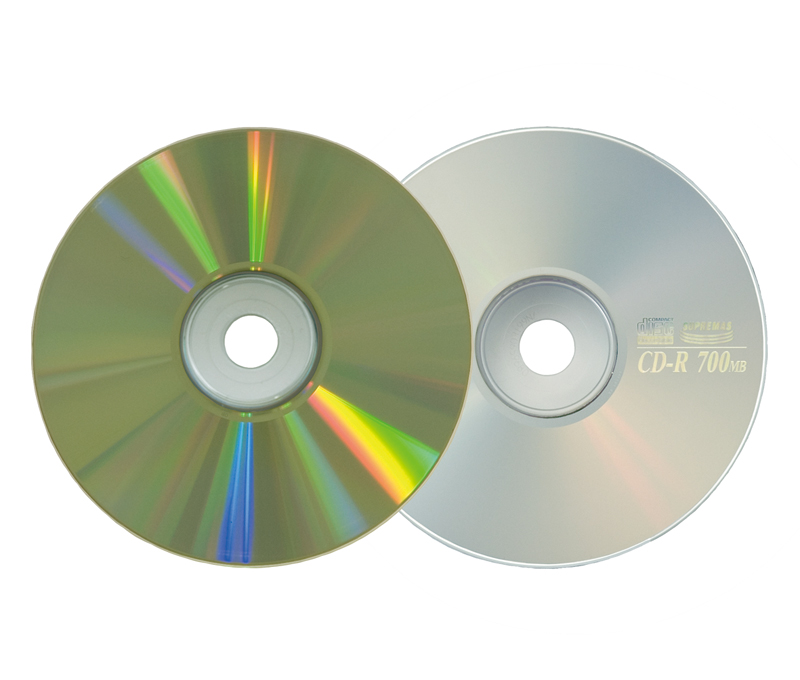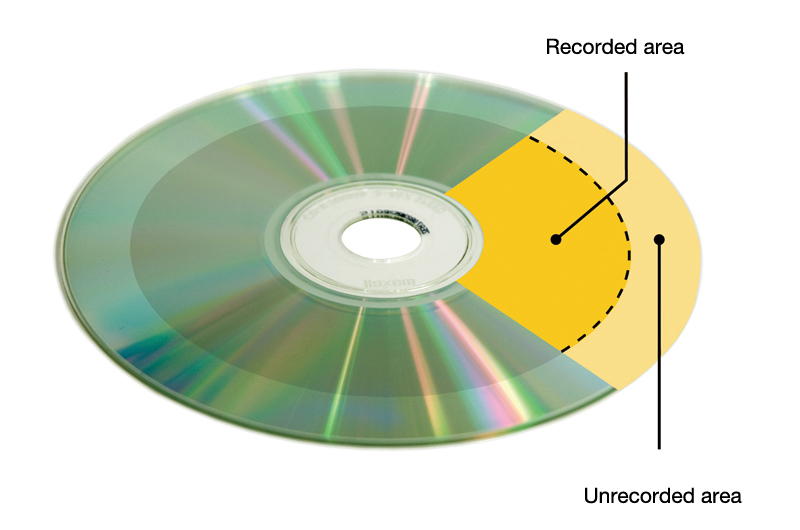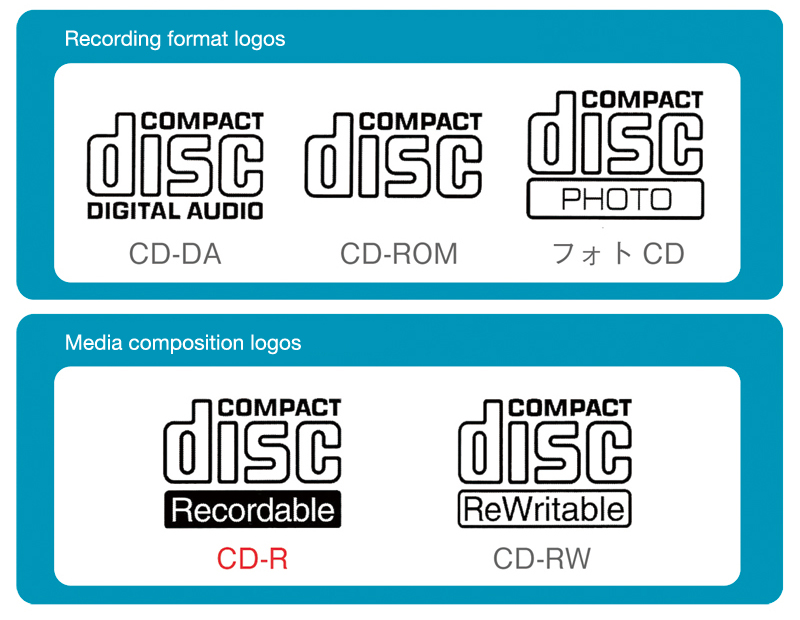CD-R
CD-R
CD-R
CATEGORIES
CD-Recordable (CD-R) (specified in Orange Book Part II) is a recordable medium that uses organic dyes such as azo, cyanine and phthalocyanine on the recording layer and records information by degradation and dissipation of the dye with heat from a laser. Once the information is written to the disc, it cannot be overwritten or erased. The geometry of the medium and the drive mechanism are interchangeable with those of a normal CD and it is frequently used in applications that are not conducive to mass production (small lot production of a large variety of products, personal recording and distribution, etc.). However, the life of the medium, which is generally estimated to be long by accelerated aging tests, is known to be drastically reduced by increased temperature and humidity and ultraviolet light. Therefore, CD-Rs should be stored in a dry, cool, dark place.
The difficulty in using CD-Rs can be attributed to the fact that there are several writing methods. The Disc at Once (DAO) method in which all of the information on the medium is written at once, offers greater compatibility with a CD in any recording format and may enable the medium to be used with audio and electronic equipment for which the CD-R is not intended. However, because no more information can be added even when there is room available, this is a drawback. Incremental writing overcomes this aspect in methods such as Track at Once (TAO), Session at Once (SAO) and Packet Write. TAO writing enables only the last recorded or added session to be validated and also enables multiple sessions to be compiled and in effect add and delete in a selected existing session. In all of these cases, once the data is written it is never deleted (even when it is not visible) and the data continues to accumulate. Therefore, the user should be careful when using the medium repeatedly. Packet Write is a similar method to TAO in principle but in the format provided to the end user, it uses special resident software to allow optical storage media to be used like a high volume floppy disk. Ostensibly, individual files can be added and deleted but this does not mean that recorded data are actually being overwritten. Therefore, once the unrecorded area is used up, it reverts to read only. Further, additional information cannot be added to media with HFS and HFS+ file systems created on Mac operating system.
RELATED PAGES

 The structure of a CD-R
The structure of a CD-R
 If you look at the reading surface at different angles,
you can see the color differences.
The inside is the recorded area, and the outside is the unrecorded area.
If you look at the reading surface at different angles,
you can see the color differences.
The inside is the recorded area, and the outside is the unrecorded area. CD logos and symbols
CD logos and symbols
